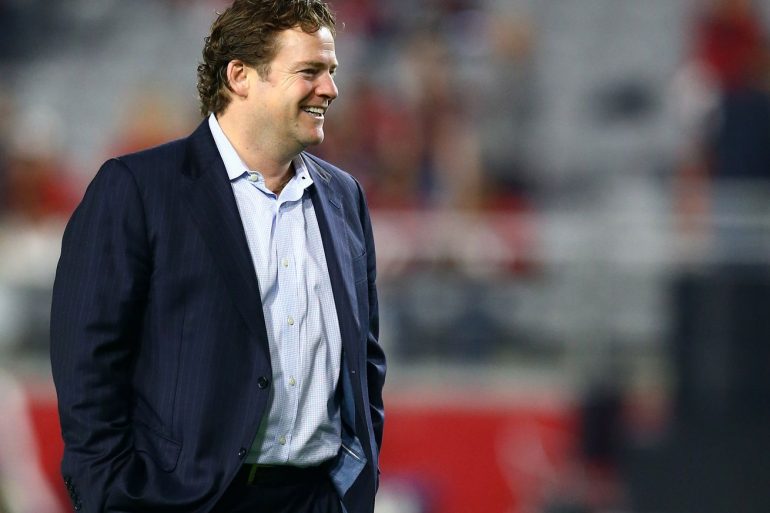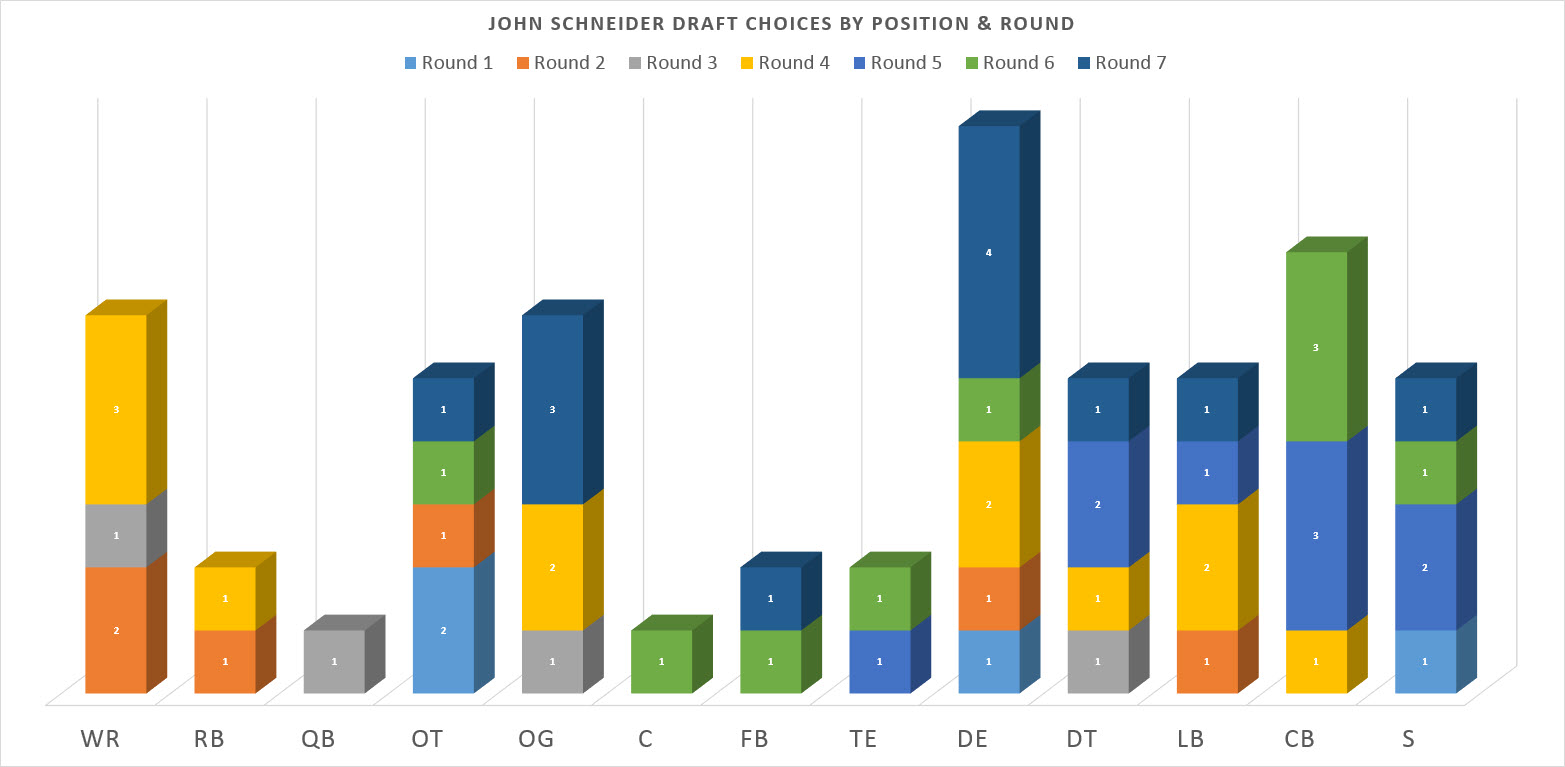Five picks in the first round. Six picks in the second. Four in the third. Twelve in the fourth. Nine in the fifth. Nine in the sixth. Twelve in the seventh. John Schneider has made a total of 56 draft picks in his time as the Seahawks General Manager. Many have been brilliant. Few have been predictable. Schneider takes aim at another pivotal draft next week, which he has described as the best since he has been here, with over 200 players worthy of being drafted. As fans and pundits attempt to decipher what he may do, clues can be found in what he has already done.
Schneider draft approach
Each year, Schneider gives little glimpses into his draft philosophy. Stitch them all together and you have end up with some meaningful context for what drives the big decisions on draft day. Three important tidbits stand out, and one was just revealed last week.
1. Need directly impacts grade
KJR AM radio host Mitch Levy got a surprising admission from Schneider during an interview last Wednesday. The Seahawks GM told Levy that they rank their draft board according to their team, not by pure value. He has said similar things in the past when explaining why the team took a player higher than where many pundits pegged him, but he provided more detail this time. James Carpenter, for example, was not the best player available when the Seahawks selected him in the first round in 2011, but he was the highest on the Seahawks draft board because of the team’s need on the offensive line. You may read that and think, “Well, duh.” It is rare, though, for a GM to openly admit that need plays such a significant factor, especially in early round picks. Most espouse the best player available philosophy, even if they clearly do not always follow it.
2. Dropoffs at a position drive players up the board
Seattle drafted Frank Clark in the second round last year, in part, because Schneider said there was a major dropoff in pass rushers after Clark. They drafted Justin Britt in the second round because there was a huge dropoff in offensive lineman after Britt. Combine this knowledge with the previous insight, and you could come to the conclusion that if Seattle decides running back is a need, and there is a major dropoff due to short supply this year, it would not be a shock to see them spend an early pick on that position.
3. Deep positions lead to trading down
This is really the inverse of the second insight. Say Seattle is on the clock at #26 and there are five offensive lineman available, and they like Taylor Decker best of all. That does not mean they will stay put and take the top guy on their board. More likely, they will look to move down and get an extra pick or two and lose out on Decker. They did this in 2012 when they liked both Mychal Kendricks and Bobby Wagner at linebacker in the second round, and made the calculated gamble to trade back a few picks. Kendricks, according to my sources, was higher on their board, but the team was happy to snap up Wagner when Kendricks was taken by the Eagles.
Schneider draft patterns
Seattle has made a first round pick in only three of the six drafts since Schneider took over. Three of the four first round picks have been lineman (1 defensive end, 2 offensive tackles). The only non-lineman they ever took in the first round was S Earl Thomas. That worked out pretty well.
Many folks, including myself, love center Ryan Kelly as a possible pick for Seattle in the first round. That would break tradition as the team has only drafted one center since 2010, and that was technically a defensive lineman taken in the sixth round (Kristjan Sokoli).
The Seahawks cornerbacks have been admired around the league. None have been drafted earlier than the fourth round, and six of the seven they have selected were in round five or later. In fact, Thomas is the only member of the secondary selected before the fifth round.
The following chart shows every pick Schneider has made by round and by position.
Besides the observations made above, a few other things stand out:
1. Running backs are taken early
Seattle has not drafted many backs, but if you throw in the fourth round pick Seattle sent to Buffalo for Marshawn Lynch, a pretty clear pattern emerges that they want that kind of talent early. They always add undrafted backs as well, like Thomas Rawls, but they place a pretty high value on talent at that position.
2. Receivers are taken early
The team has never drafted a receiver after the four round, and they have taken six receivers. Only two positions have been drafted more often during Schneider’s tenure. Given the team’s lesser need at that position this year, it could open up the early rounds for other positions.
3. Defensive ends early and often
Schneider has spent nine draft choices on defensive ends, more than any other position, and he has taken them up and down the draft. Bruce Irvin, despite winding up at linebacker, was drafted to be a defensive end. He loves to take fliers on edge rushers late in the draft. Guys like Dexter Davis, Greg Scruggs, and Ty Powell were all seventh round picks.
4. Defensive tackles, especially run stuffers, not highly valued
Jordan Hill is the highest pick Schneider has ever applied to a defensive tackle, and that was in the third round. Hill was believed to be a pass rusher. The highest the team has ever drafted a run-stuffing tackle was the fifth round (Jesse Williams, Jimmy Staten). This draft is loaded with great defensive tackles, but many of them are run stuffers. As much as many of us would love to see a guy like Andrew Billings added early, history makes that unlikely.
5. Linemen, linemen, linemen
Twelve picks have been spent on offensive linemen and fourteen picks have been spent on defensive linemen. That’s a whopping 26 picks on the line, making up 46% of all the draft choices Schneider has made. In a draft stocked with line talent, and the team having clear needs on both lines, there is little reason to think this will change. We may see as many as five linemen selected.


